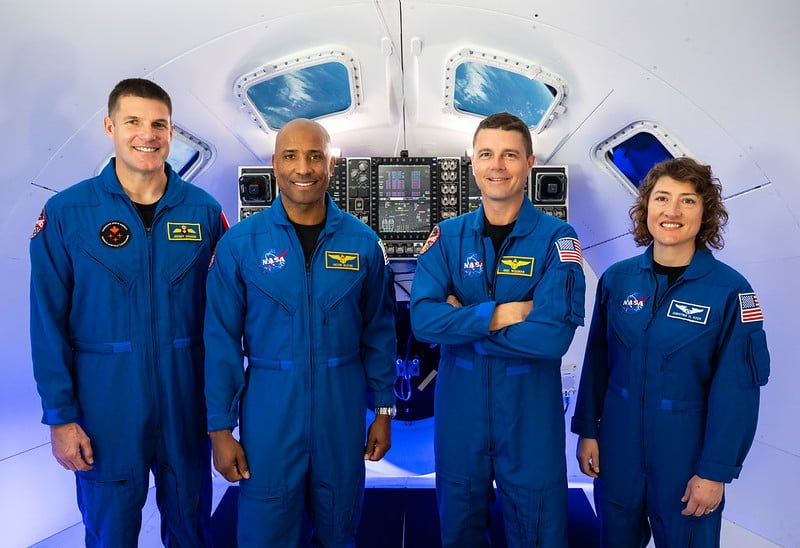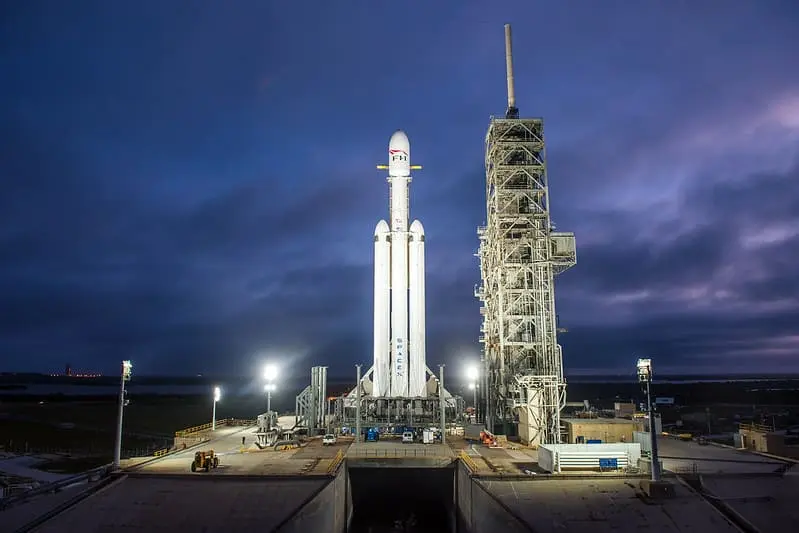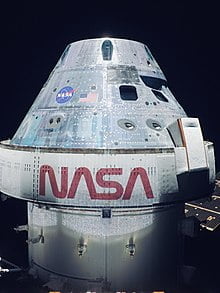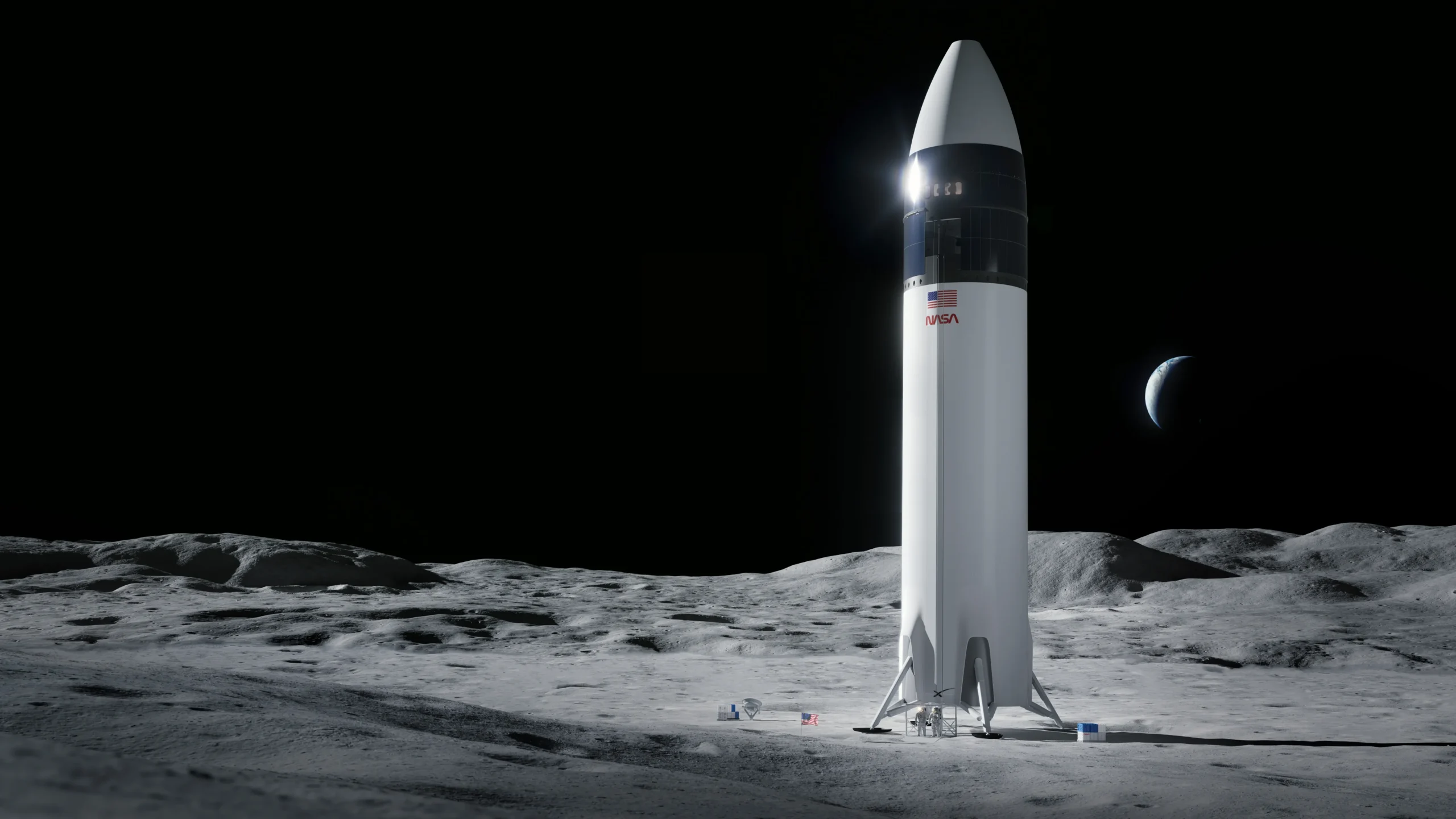The Artemis program, led by NASA, aims to land humans on the moon and establish a lunar presence. This will be the first ‘man on the moon’ mission since the Apollo 17 which was carried out in 1972.
This program consists of three missions-
Artemis I

This Mission was launched successfully on 16 November 2022 it was an uncrewed test flight for NASA’s SLS (Space Launch System) Rocket and The Orion Spacecraft. It aimed to test the Spacecraft in the Lunar Orbit. This mission validated the performance and safety of the flight systems, setting the stage for subsequent crewed missions.
Key objectives included a comprehensive evaluation of the spacecraft’s systems during a multi-week mission that will take it around the Moon and back to Earth.
Read: New spacesuit technology will transform astronauts urine into drinkable water
Artemis II

Artemis II will be the first crewed test flight of the SLS and the Orion spacecraft. The four crew members will perform extensive testing in Earth orbit. Orion will then be boosted into a free-return trajectory around the Moon, returning Orion to Earth for re-entry and splashdown.
The launch was scheduled no earlier than (NET) late November 2024 Now Delayed to September 2025.
Artemis III
Artemis III is planned to be the first crewed lunar landing. The mission depends on a support mission to place a Starship Human Landing System (HLS) in place in a near-rectilinear halo orbit (NRHO) of the Moon before the launch of SLS/Orion.
After Starship HLS reaches NRHO, SLS/Orion will send the Orion spacecraft with four crew to rendezvous and dock with HLS.
Two astronauts will transfer to HLS, which will descend to the lunar surface and spend about 6.5 days on the surface. The astronauts will perform at least two EVAs on the surface before the HLS ascends to return them to a rendezvous with Orion. Orion will return the four astronauts to Earth. The launch is scheduled no earlier than April 2025.
The Lunar Gateway
The Lunar Gateway, or simply Gateway, is the first planned extraterrestrial space station. It will be placed in lunar orbit and serve as a solar-powered communication hub, science laboratory, short-term habitation module for government-agency astronauts, and a holding area.
It is a multinational collaborative project involving four of the International Space Station partner agencies- NASA, the European Space Agency (ESA), Japan Aerospace Exploration Agency (JAXA), and the Canadian Space Agency (CSA) — as well as the Mohammed Bin Rashid Space Centre (MBRSC), which will provide the Crew and Science Airlock module for the Lunar Gateway.
The Lunar Gateway is planned to be the first space station beyond low Earth orbit and the first space station to orbit the Moon.
Falcon Heavy

Falcon Heavy is a partially reusable super heavy-lift launch vehicle that can carry cargo into Earth orbit, and beyond. It is designed, manufactured, and launched by American aerospace company SpaceX.
Orion Spacecraft

Orion (Orion Multi-Purpose Crew Vehicle or Orion MPCV) is a partially reusable crewed spacecraft used in NASA’s Artemis program. The spacecraft consists of a Crew Module (CM) space capsule designed by Lockheed Martin and the European Service Module (ESM) manufactured by Airbus Defence and Space.
Capable of supporting a crew of four beyond low Earth orbit, Orion can last up to 21 days undocked and up to six months docked. It is equipped with solar panels, an automated docking system, and glass cockpit interfaces modelled after those used in the Boeing 787 Dreamliner.
Starship HLS

Starship HLS is a lunar lander variant of the Starship spacecraft that is slated to transfer astronauts from a lunar orbit to the surface of the Moon and back. It is being designed and built by SpaceX under the Human Landing System contract to NASA as a critical element of NASA’s Artemis program to land a crew on the Moon.
The Dream Of Space Colonization Will Soon Become a Reality!
International and Commercial partners
International cooperation is a highlight of the Artemis mission. NASA has partnered with space agencies from Europe (ESA), Japan (JAXA), and Canada (CSA), among others. These collaborations bring in diverse expertise and resources, ensuring the mission’s success. Commercial partners like SpaceX and Boeing also play a crucial role, providing innovative solutions and expanding the mission’s capabilities through public-private partnerships.

